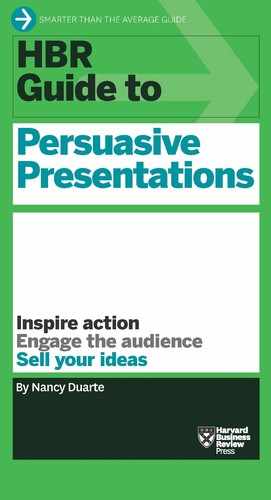Gauge Whether You’ve Connected with People
Gathering feedback on your talk in real time and after you’re done gives you different kinds of insights—all of them valuable.
Watch the backchannel
Have a moderator keep an eye on social media and send text messages to your cell phone if she thinks you should address any criticisms in a Q&A at the end of your talk. (She should pass along tough but fair comments—and filter out any chatter that would completely throw you off-kilter.) Or, if you’re comfortable tweaking your message as you go, try putting your phone in silent mode, setting it on the podium or table in front of you, and glancing at it throughout the presentation. If the audience begins to revolt on the backchannel, you can change direction. Let people know you’ve monitored their sentiment because you want to address their concerns.
Watch the live audience
People in the room will show how they’re feeling through their posture and facial expressions. Keep a keen eye out for physical cues that they’re engaged in your material. One reason Steve Jobs could maintain a heightened sense of anticipation during a 90-minute keynote is because he had a gift for eliciting frequent physical reactions. In his 2007 iPhone launch presentation, the audience laughed 79 times and clapped 98 times—that’s about one reaction every 30 seconds.
It’s important to pick up on negative cues, too, so you can change course. Are audience members leaning back with their arms crossed? That could be a sign of resistance. Do they look tired? Are they fidgeting? Looking around? Checking e-mail? They may be bored or apathetic toward your ideas. If they’re not demonstrating engagement by leaning forward, nodding, smiling, and taking notes, find a way of drawing them in.
One conference presenter could easily tell from body language that he was missing the mark with his audience—people clearly weren’t into his message. Instead of dragging on, he stopped, admitted that he’d miscalculated when he’d prepared, and asked if he’d be given a chance to speak at the next conference if he promised to do a better job of understanding the group’s needs. He got a standing ovation and an invitation to come back the next year.
Survey your audience
A survey isn’t quite as immediate as backchannel chatter and other real-time feedback, but it gives you more control over the kinds of insights you’ll get from the audience—and the comments may be more thoughtful. Make it short and direct, and have people fill it out on paper, online, or by e-mail. Explicitly ask them to be candid. Project a slide at the end of your talk encouraging people to rate you either right away, with their phones or tablets, or at their leisure.
Organizers of large events often survey audiences at all the sessions. If you’re speaking at such an event, ask for the results. Even if you’re doing a much smaller, less-formal presentation, you can ask one or two audience members whose opinion you value to give you an honest read on how it went. Tell them you’re trying to refine your skills, and they’ll probably be glad to help.
Analyze sentiment
If you’re giving a high-stakes talk to a large group—a keynote address, for example—it’s probably worth analyzing social media data, such as how many people blogged about your talk, how much traffic was driven to the press announcement through social media, and whether the coverage and comments were negative or positive. This will give you an even finer-grained picture of how well you’ve connected with your audience.
But the data can be daunting if you don’t know what you’re doing. Hire an analytics specialist to really dig in and help you see where you did well and where you can improve. In the analysis, you may discover a rival you didn’t know about, for instance, or a new key influencer who drives buying behavior.
Analyze your reach
You can also use analytics tools to measure how many people spread your message through social media, how many clicked on the shared links, and whether your message was picked up by the people you’d want to hear it. Again, work with a data specialist.
It takes an iron gut to digest critical feedback. But it will make you a better presenter. Look closely at what the audience is saying about you, and modify your message, visuals, and delivery so you’ll resonate more deeply with people in the future.
I launched my speaking career at a small annual conference. The first survey I got back said that I delivered a fire hose of valuable information, but the audience felt no connection. The event organizer told me I should incorporate more personal stories. It was painful to hear, but true. I took the feedback very seriously. In fact, it sent me on a several-year journey studying story principles and structure, which I now apply to presentations.
I’m not suggesting that every piece of feedback you get will be useful or even true. Usually, though, if you put the audience’s needs first when you create your content and you’re sincere in your approach when you deliver it, people will want to help you succeed.
